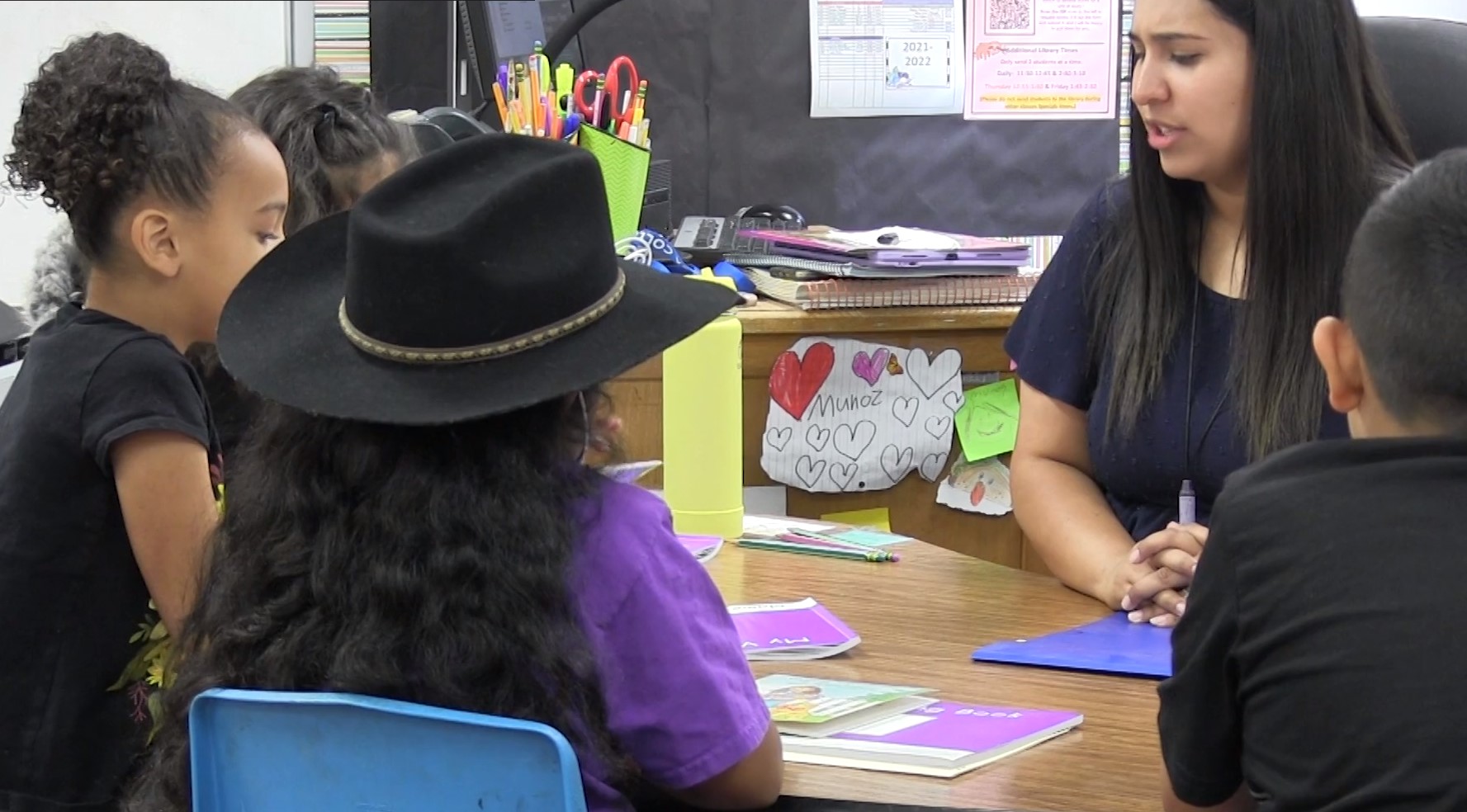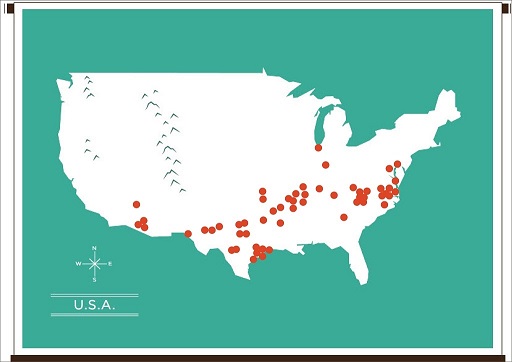The Opportunity Culture® Strategy
Looking for a high-impact, sustainable, cost-effective, proven way to give all students access to excellent teaching and all educators access to outstanding career opportunities?
Our innovative staffing models help pre-K–12 districts and schools restructure to extend the reach of excellent teaching to more students, for more pay, within recurring school budgets—backed up by 10 years of student learning growth and educator-pleasing results!
How Opportunity Culture® Models Work
In each school using these models:
Each teacher in the Multi-Classroom Leader® role leads a small teaching team, providing guidance and frequent on-the-job coaching while continuing to teach, often by leading small-group instruction. Research shows that when teachers increase small-group teaching and tutoring, student learning surges.
Accountable for the results of all students in the team, these team leaders earn supplements averaging 20 percent (and up to 50 percent) of teacher pay, within the regular school budget.
In the majority of schools, some teaching team members serve in the Team Reach Teacher™ and Reach Associate™ roles, reaching more students, for more pay, with increased small-group learning, all with the team leader’s guidance and support.
Schools redesign schedules to provide additional school-day time for teacher planning, coaching, and collaboration.
With those elements in place, schools using these models can add elements such as yearlong, paid teacher residencies, remotely located team leader roles to increase student access to excellent teaching, and the Multi-School Leader™ role.
Schools and districts can go further by receiving Opportunity Culture® certification and validation, to attract applicants looking for support and career paths and families looking for excellent schools, and communicate with their community, state, and funders about the strength of their instructional system.
The Opportunity Culture® Principles
Teams of teachers & school leaders must choose and tailor models to:
Reach more students with excellent teachers and their teams
Pay teachers more for extending their reach
Fund pay within regular budgets
Provide protected in-school time and clarity about how to use it for planning, collaboration, and development
Match authority and accountability to each person’s responsibilities
Similar principles apply to teams of principals and district/network leaders
This has been the most feedback and constructive criticism in creating this teacher that I’ve always aspired to be, and now I have the support to do it.
—Team Teacher
“
Why Districts Use These Models
Districts join this national initiative to address student learning growth that is too low, especially in high-need schools, and to address staffing shortages that have grown to affect many schools.
These innovative staffing designs address shortages and boost learning. Innovative staffing means thinking differently about instructional roles and available funding to improve academics, creating new career options for teachers and addressing persistent teaching vacancies.
The models offer schools new tools that include high-paying advanced team roles, improved support for new teachers, and staffing models that do not require filling every teacher vacancy to ensure that students have access to excellent instruction.
See some of the education research groups, advocacy organizations, and federal and state offices that suggest these models as a strategy to consider.
How Opportunity Culture® Models Help Address Challenges

Staffing Shortages
Staffing shortages have plagued some schools for decades. Our staffing designs provide a solution that shifts schools out of emergency hiring mode—and boosts learning. Learn how Opportunity they address staffing shortages—with high-paying advanced roles, improved support for new teachers, and staffing models that do not require filling every teacher vacancy to ensure that students have access to excellent instruction.

Small-Group Tutoring
Maximize the research-proven power of tutoring through Multi-Classroom Leader® teams. These teams, with a proven, accountable team leader—paired with rotational scheduling often used in our models—make it possible for schools to scale up effective small-group tutoring by paraprofessionals and team teachers, helping to reach all students with personalized attention. Our SIMPLE-TC™ professional learning series on creating a tutoring culture can help.

Paid Teacher Residencies
Schools using these models can build teacher pipelines through yearlong, sustainably paid teacher residencies. Residents play critical roles for students and teachers by serving on teaching teams while learning teaching skills from the excellent team leader and team teachers. Paid residencies also address the need for teacher candidates to earn income while obtaining degrees, lowering the barriers to entering the profession
Hear what past and present district leaders have to say about using the models:
“We see this as a strategic opportunity to change teaching and learning in our schools."
—North Carolina 2020 Superintendent of the Year Anthony Jackson
"Is [implementation of these models] the right thing to do for our kids? When we look at our data, we know it is."
—North Carolina 2022 Superintendent of the Year Valerie Bridges
“We have ... folks that are coming from other districts because of this opportunity—and then our own people, certainly it retains them as teachers.”
—Texas Region 18 Superintendent of the Year Scott Muri
“Anything we can do to bring new and exciting ideas in teacher training is welcomed in Aldine ISD, and we are honored to be one of seven school districts in Texas selected for this prestigious teacher training program.”
—K–12 Dive Superintendent of the Year LaTonya Goffney
In Districts and Charter Schools Across the U.S.
More districts and charter school organizations—large and small, rural and urban—commit to these models every year. Read about some of them!

How We Work with Districts
We offer several price points for districts.
Intensive Co-Design
Best for districts that need full consulting support to manage change and co-design Opportunity Culture® plans with us
Focused Co-Design
Best for districts with capacity to manage change but needing technical guidance—optional add-on supports available
Self-Driven Design
Best for districts that can manage their own design and implementation in the Opportunity Culture® portal
Professional Learning
Supporting school design and roles for teachers, teacher-leaders, principals, staff, and administrators
Data Dashboard
Our data dashboard tracks the growth of the initiative—including the number of participating schools and districts, student impact, and statistics on the extra pay Opportunity Culture ® educators have earned since schools began using these models in 2013.
We use those dashboard results, annual, anonymous surveys of educators, and our experience working directly with districts on implementation to continually refine design and professional learning materials and guidance.
2022 marked the beginning of a new era of innovation, as we expand the paid roles on teaching teams; design the Multi-School Leadership™ model, a model for remotely located team leaders, embedded tutoring, and lower-cost services to schools; and hit the milestone of reaching over 150K students in one year.
Our clients have rated us in the “excellent” zone, on average, in every year since our annual survey began.
The partnership has been great…Our work with Public Impact has just been phenomenal—…The resources that they have provided for our team have just been out of this world, and I applaud and appreciate just the intentionality of the process, because I think it’s helped us move a lot faster than we would have.
—North Carolina superintendent
“
